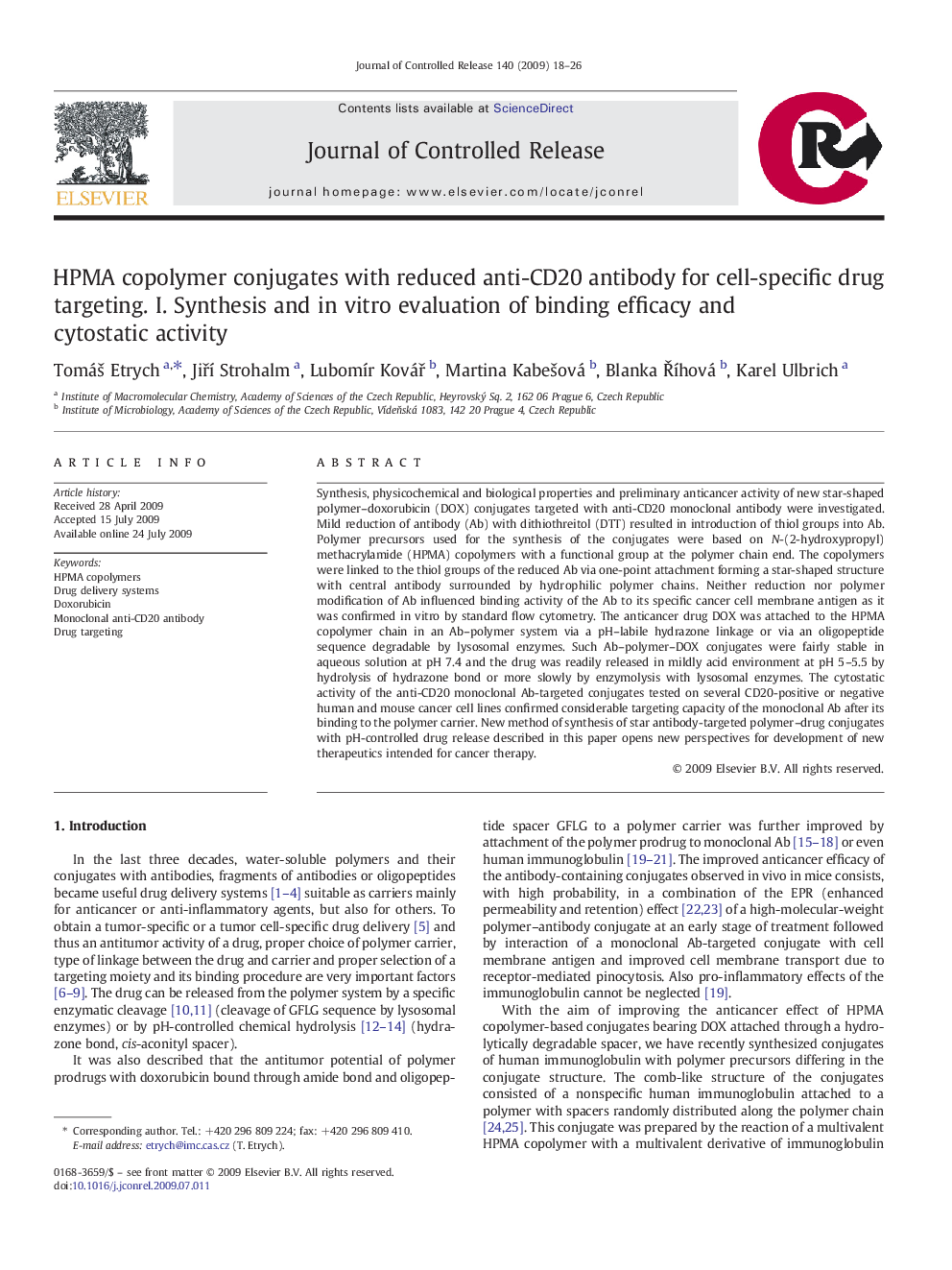| Article ID | Journal | Published Year | Pages | File Type |
|---|---|---|---|---|
| 1426080 | Journal of Controlled Release | 2009 | 9 Pages |
Synthesis, physicochemical and biological properties and preliminary anticancer activity of new star-shaped polymer–doxorubicin (DOX) conjugates targeted with anti-CD20 monoclonal antibody were investigated. Mild reduction of antibody (Ab) with dithiothreitol (DTT) resulted in introduction of thiol groups into Ab. Polymer precursors used for the synthesis of the conjugates were based on N-(2-hydroxypropyl)methacrylamide (HPMA) copolymers with a functional group at the polymer chain end. The copolymers were linked to the thiol groups of the reduced Ab via one-point attachment forming a star-shaped structure with central antibody surrounded by hydrophilic polymer chains. Neither reduction nor polymer modification of Ab influenced binding activity of the Ab to its specific cancer cell membrane antigen as it was confirmed in vitro by standard flow cytometry. The anticancer drug DOX was attached to the HPMA copolymer chain in an Ab–polymer system via a pH–labile hydrazone linkage or via an oligopeptide sequence degradable by lysosomal enzymes. Such Ab–polymer–DOX conjugates were fairly stable in aqueous solution at pH 7.4 and the drug was readily released in mildly acid environment at pH 5–5.5 by hydrolysis of hydrazone bond or more slowly by enzymolysis with lysosomal enzymes. The cytostatic activity of the anti-CD20 monoclonal Ab-targeted conjugates tested on several CD20-positive or negative human and mouse cancer cell lines confirmed considerable targeting capacity of the monoclonal Ab after its binding to the polymer carrier. New method of synthesis of star antibody-targeted polymer–drug conjugates with pH-controlled drug release described in this paper opens new perspectives for development of new therapeutics intended for cancer therapy.
Graphical abstractNew method of conjugation of reduced Ab with polymer precursors enable preparation of Ab–polymer–drug conjugate with preserved Ab binding efficacy to Cd20 positive cell lines.Figure optionsDownload full-size imageDownload as PowerPoint slide
